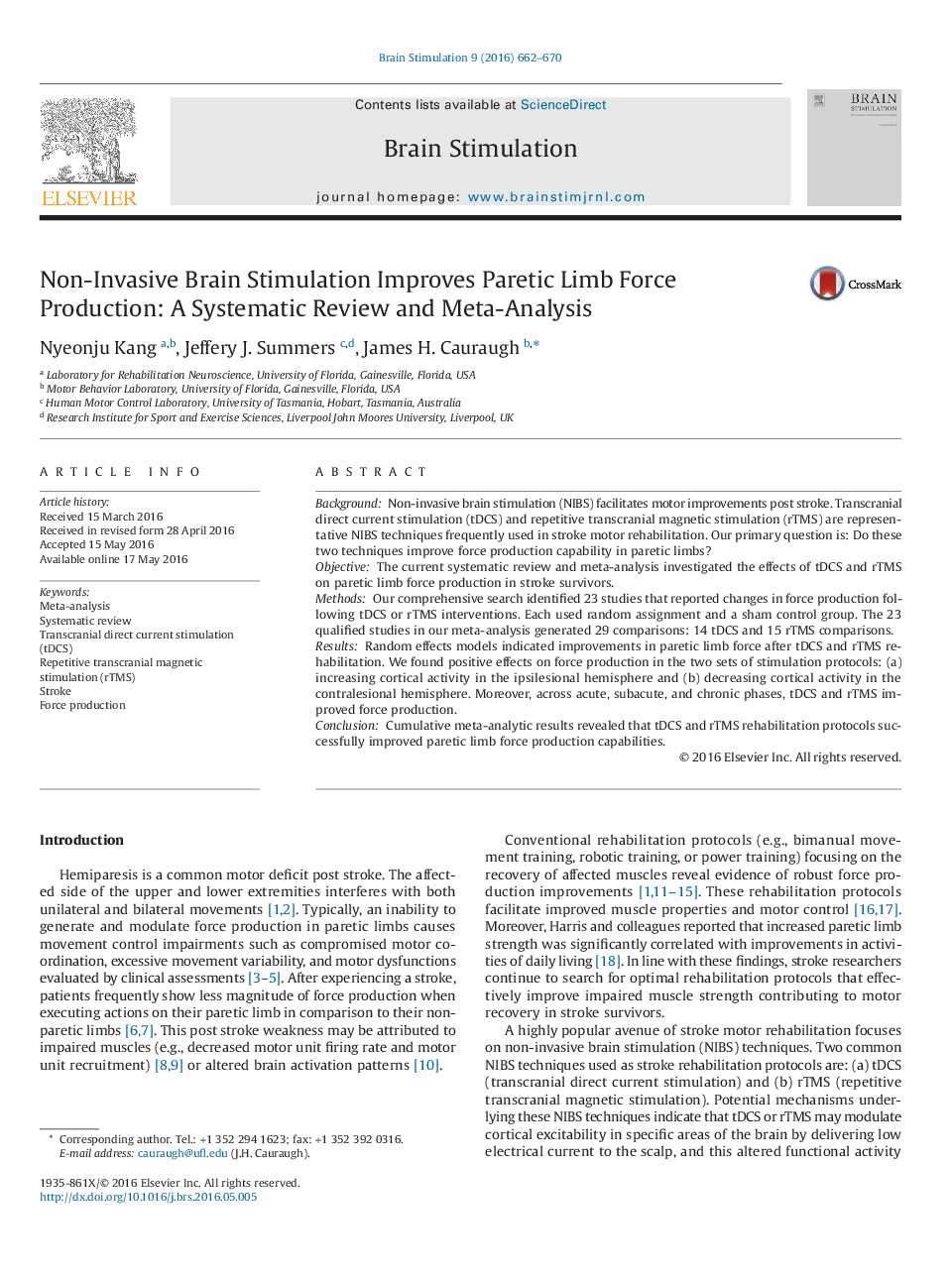| Article ID | Journal | Published Year | Pages | File Type |
|---|---|---|---|---|
| 3038690 | Brain Stimulation | 2016 | 9 Pages |
•tDCS and rTMS improved force production capabilities post stroke.•Increasing cortical activity in the affected hemisphere enhanced force production.•Reducing cortical activity in the unaffected hemisphere increased force production.•Force production capability improved in each of three recovery stages.
BackgroundNon-invasive brain stimulation (NIBS) facilitates motor improvements post stroke. Transcranial direct current stimulation (tDCS) and repetitive transcranial magnetic stimulation (rTMS) are representative NIBS techniques frequently used in stroke motor rehabilitation. Our primary question is: Do these two techniques improve force production capability in paretic limbs?ObjectiveThe current systematic review and meta-analysis investigated the effects of tDCS and rTMS on paretic limb force production in stroke survivors.MethodsOur comprehensive search identified 23 studies that reported changes in force production following tDCS or rTMS interventions. Each used random assignment and a sham control group. The 23 qualified studies in our meta-analysis generated 29 comparisons: 14 tDCS and 15 rTMS comparisons.ResultsRandom effects models indicated improvements in paretic limb force after tDCS and rTMS rehabilitation. We found positive effects on force production in the two sets of stimulation protocols: (a) increasing cortical activity in the ipsilesional hemisphere and (b) decreasing cortical activity in the contralesional hemisphere. Moreover, across acute, subacute, and chronic phases, tDCS and rTMS improved force production.ConclusionCumulative meta-analytic results revealed that tDCS and rTMS rehabilitation protocols successfully improved paretic limb force production capabilities.
